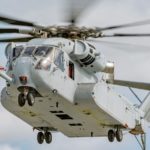
Driven by a solid outlook in its segment that provides a wide range of electronic capabilities to defense and commercial customers, BAE Systems, Inc., is expecting modest growth this year in its top line, Jerry DeMuro, president and CEO of the U.S.-based subsidiary Britain’s BAE Systems plc, said on Thursday.Sales and operating income in the Electronic Systems segment are expected to rise in the mid-single digits in 2017, primarily on the strength of three programs, DeMuro said during a sweeping…

 By
By 











